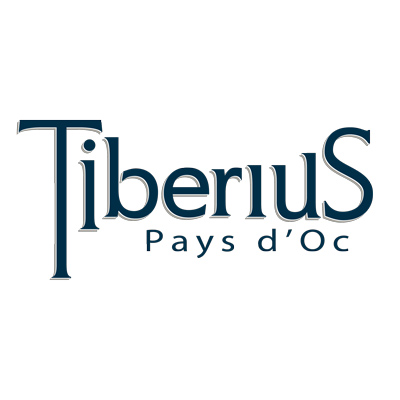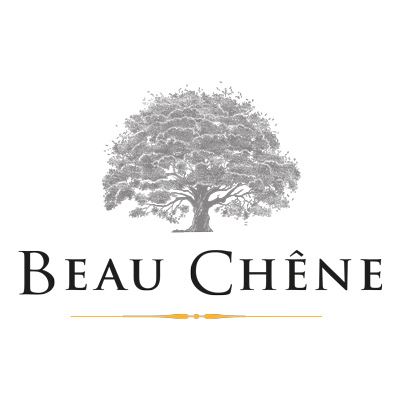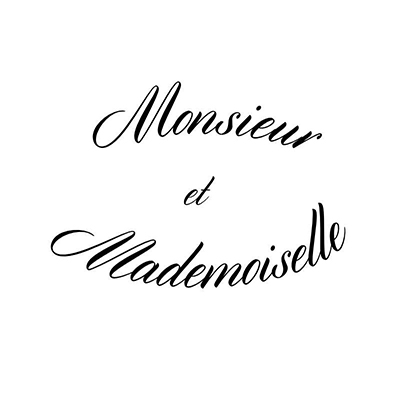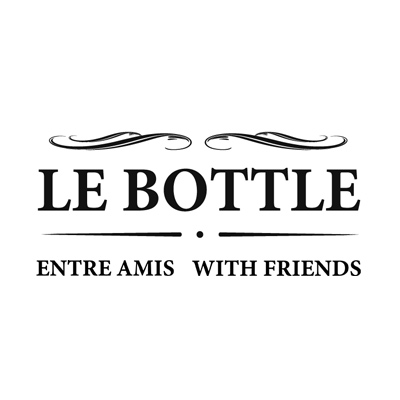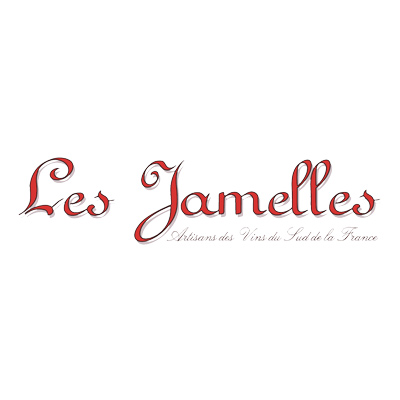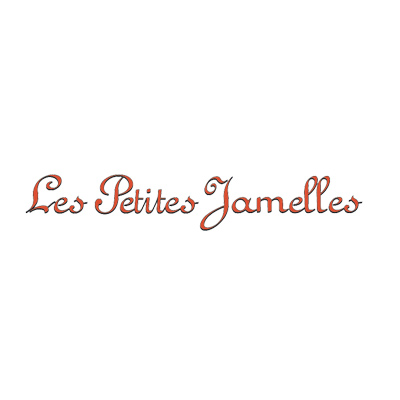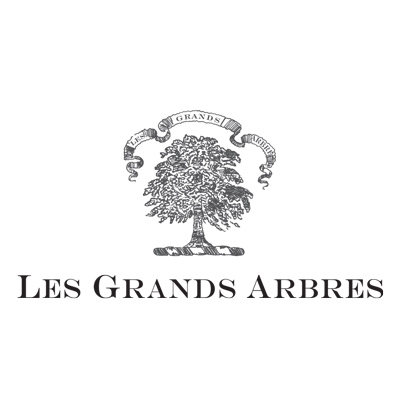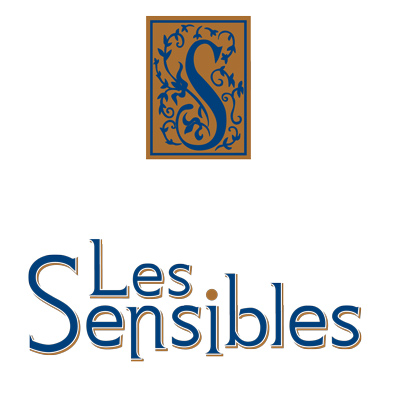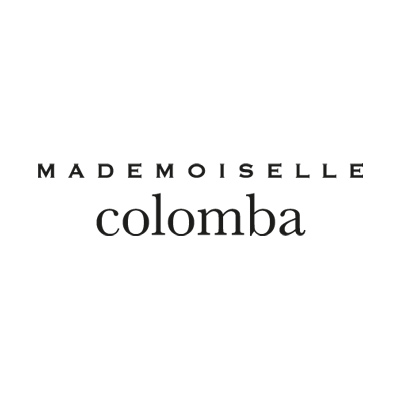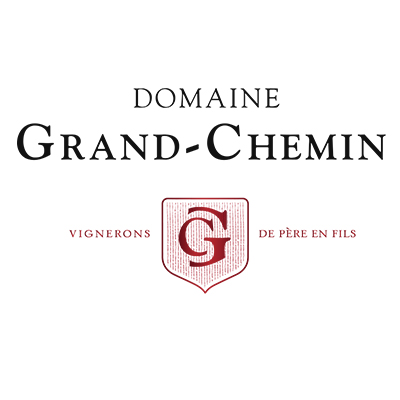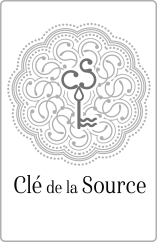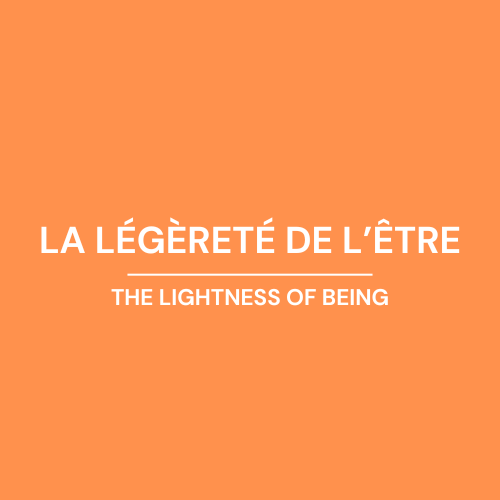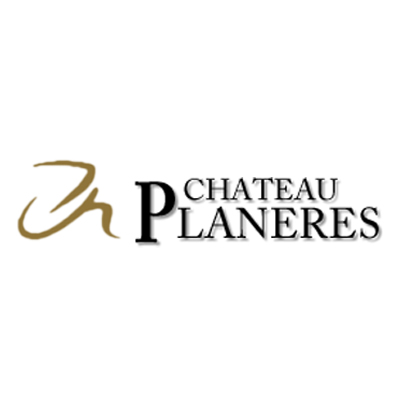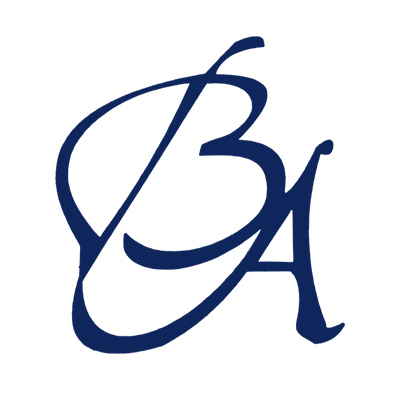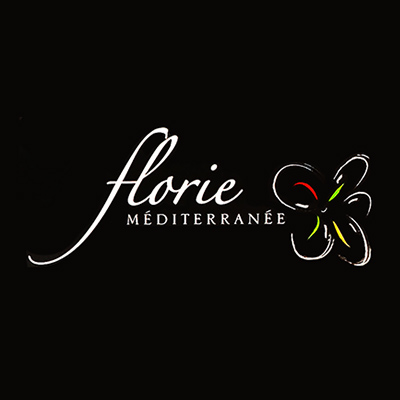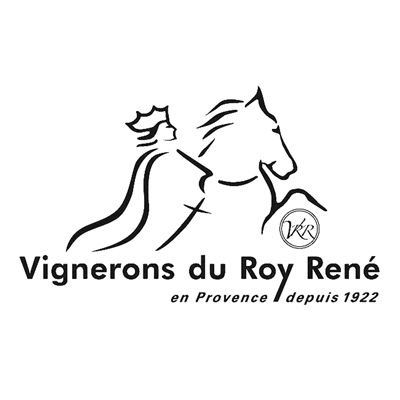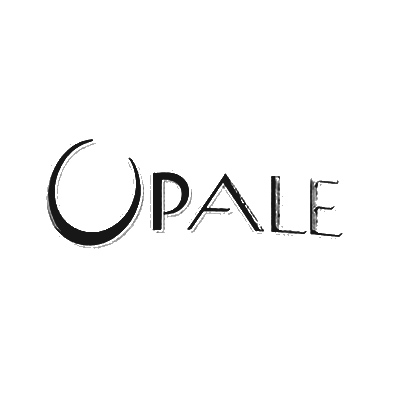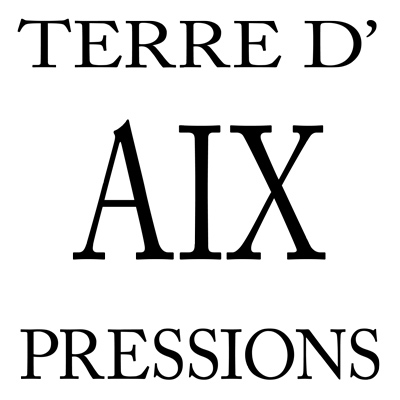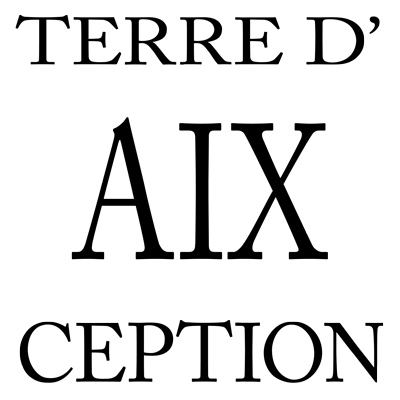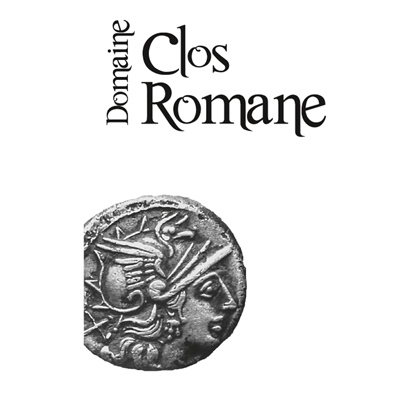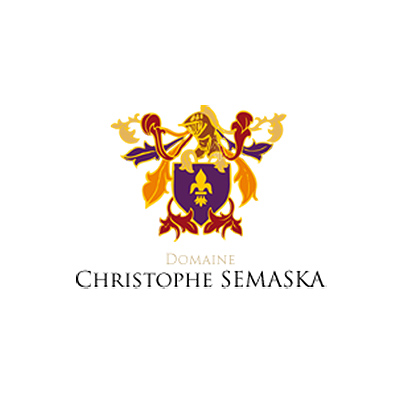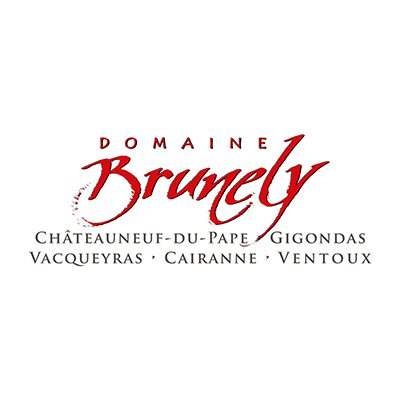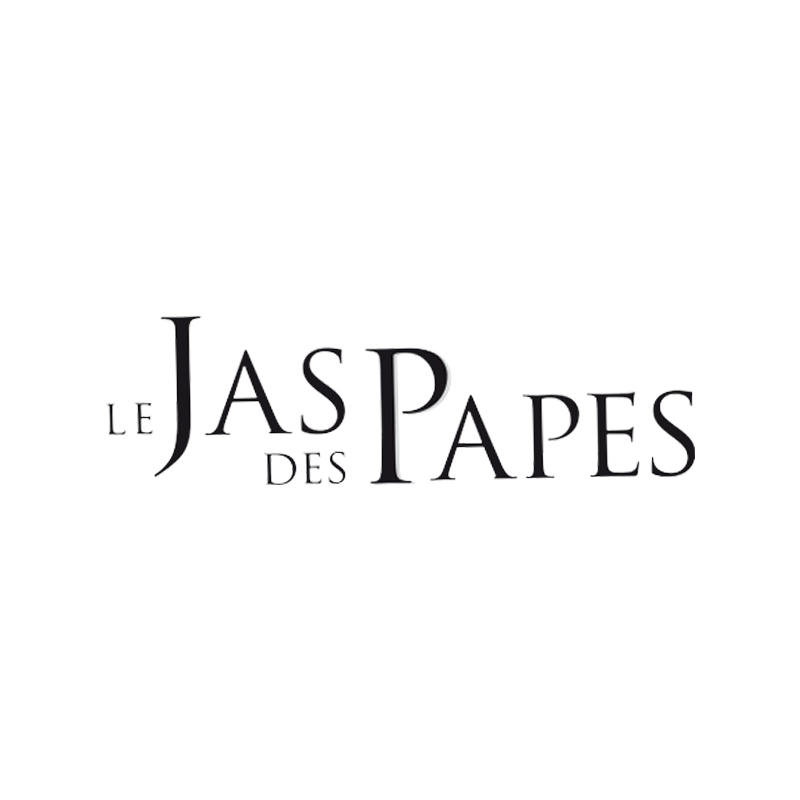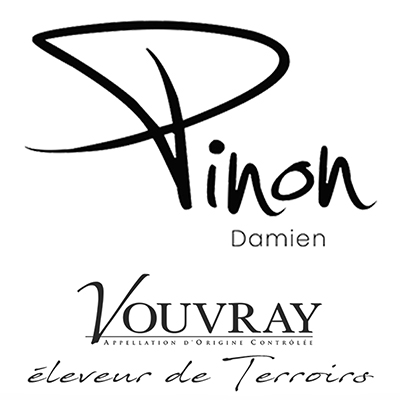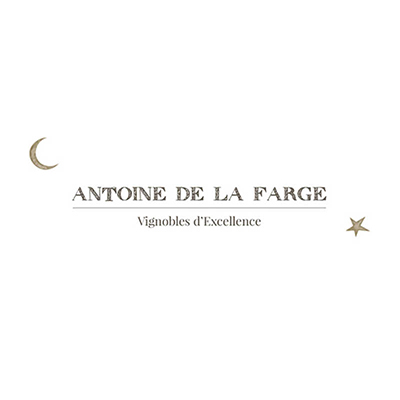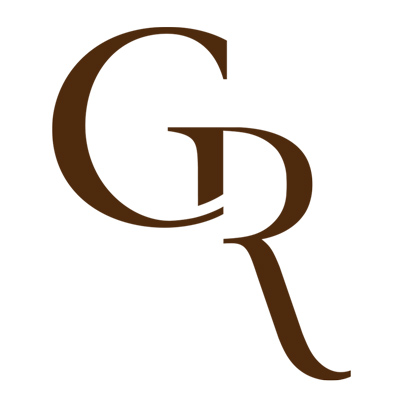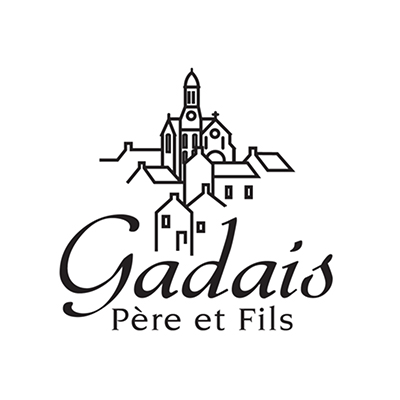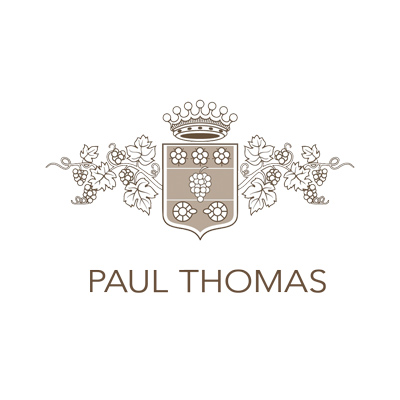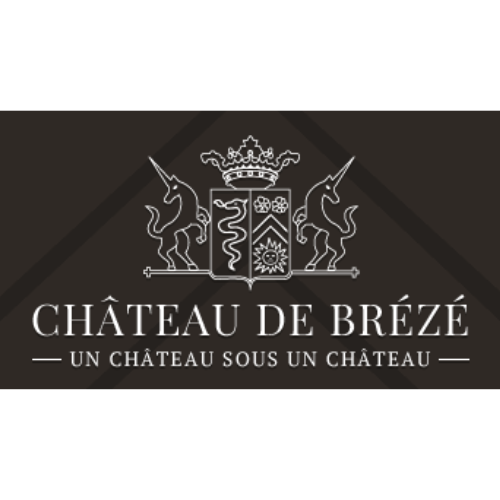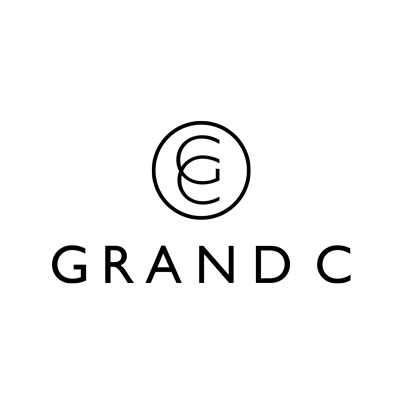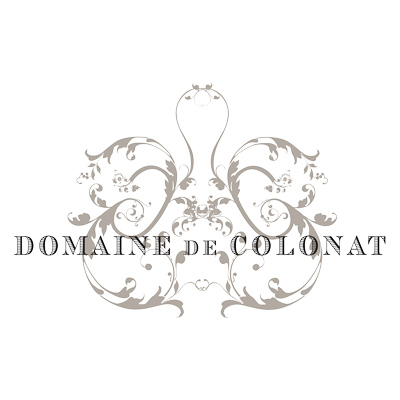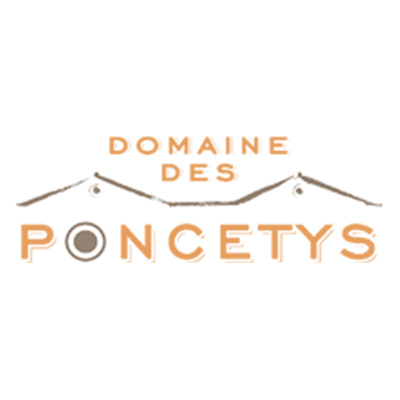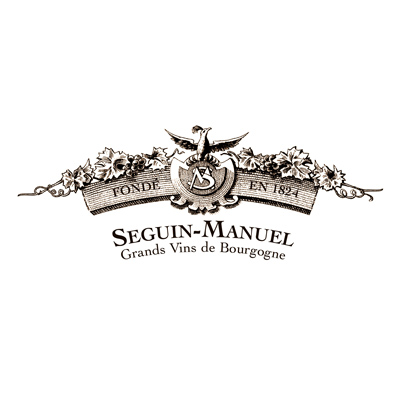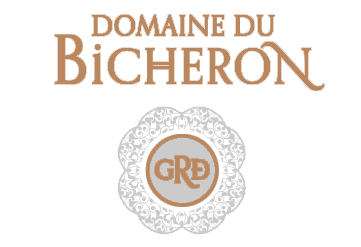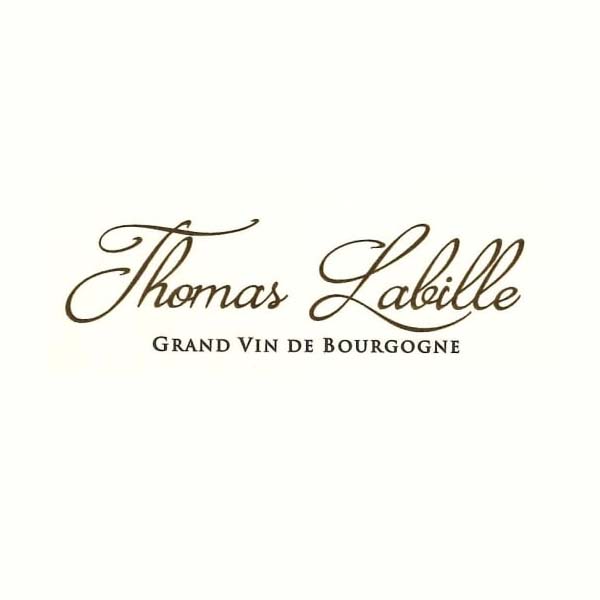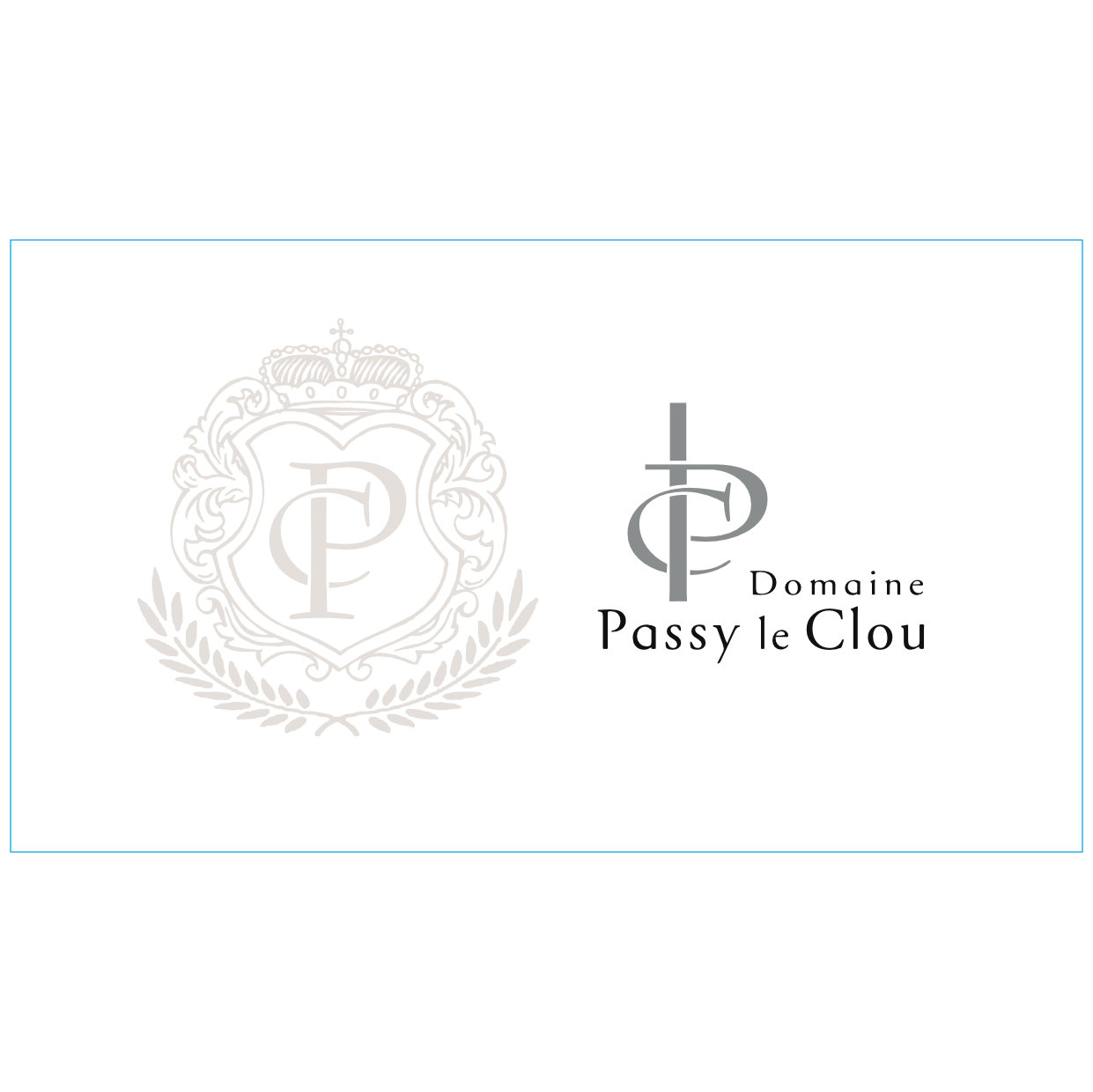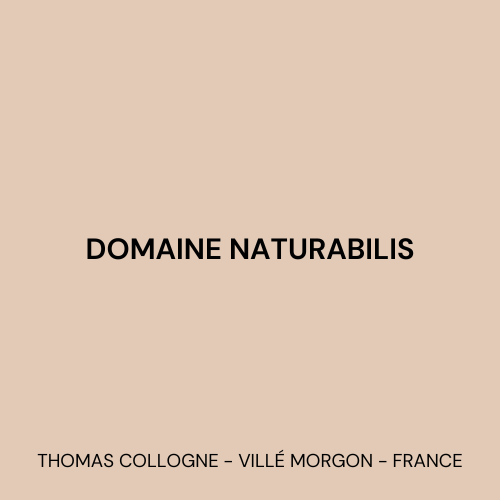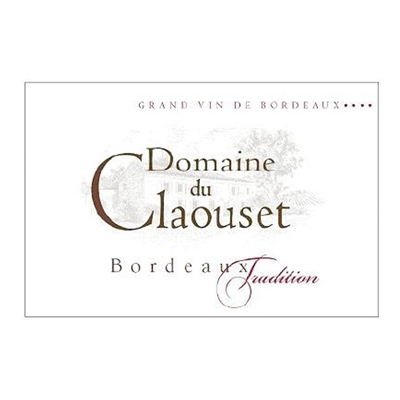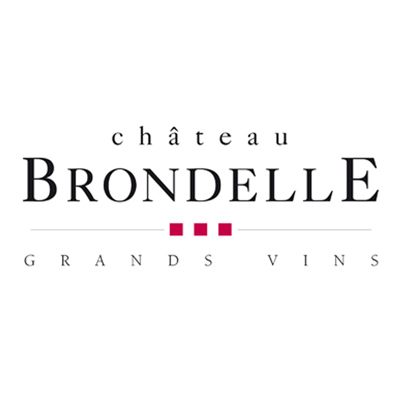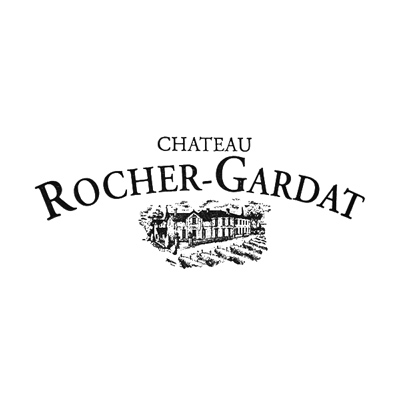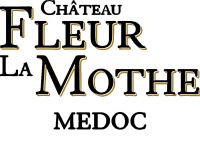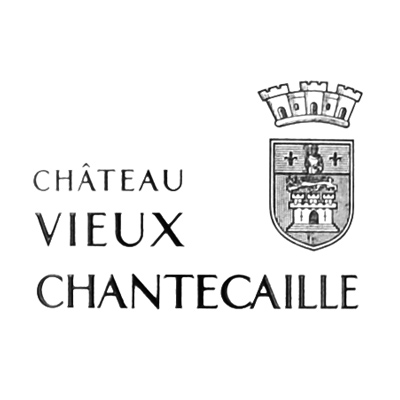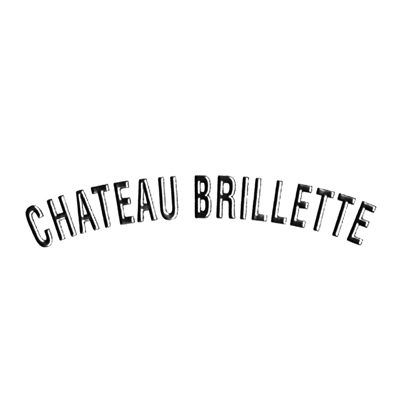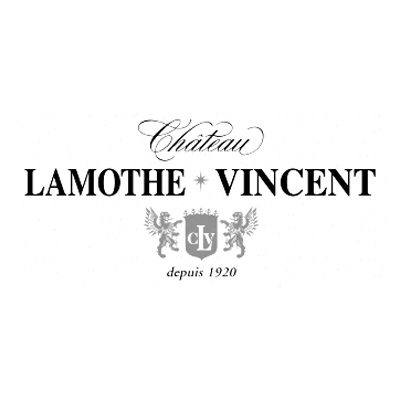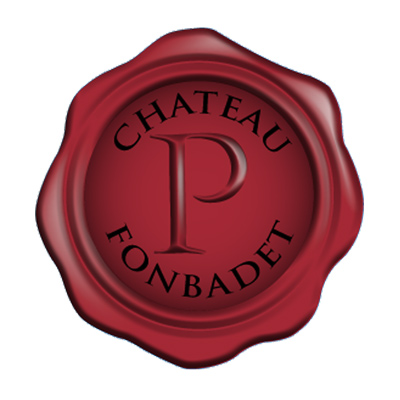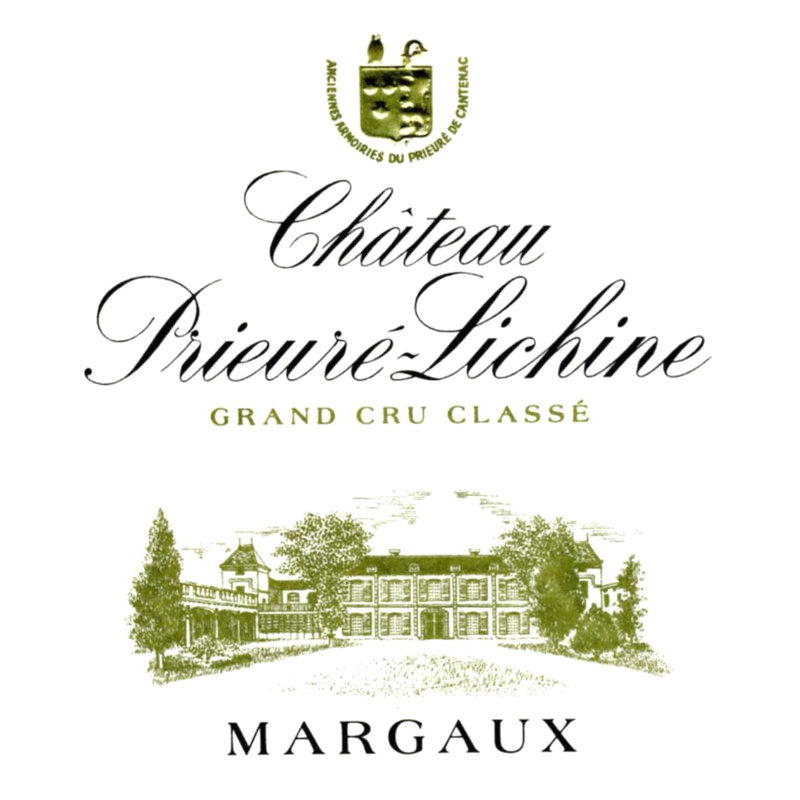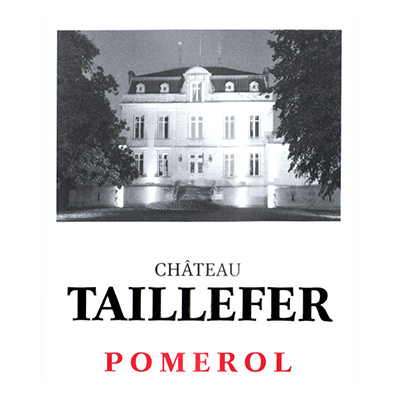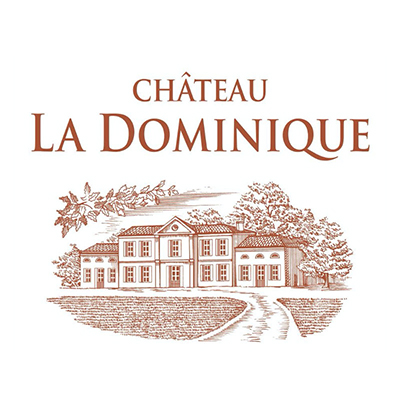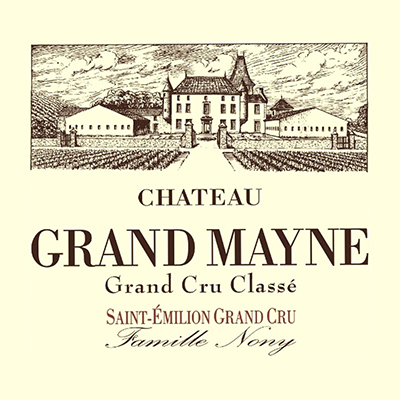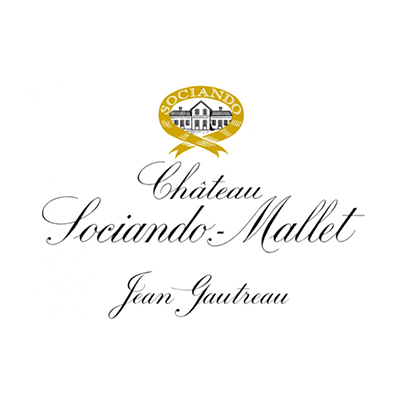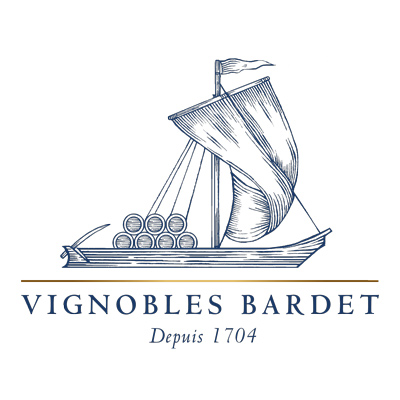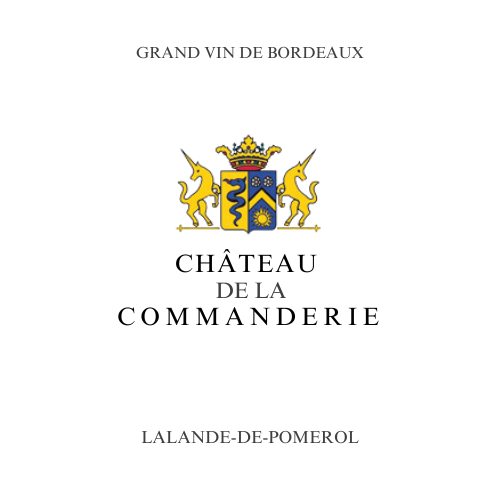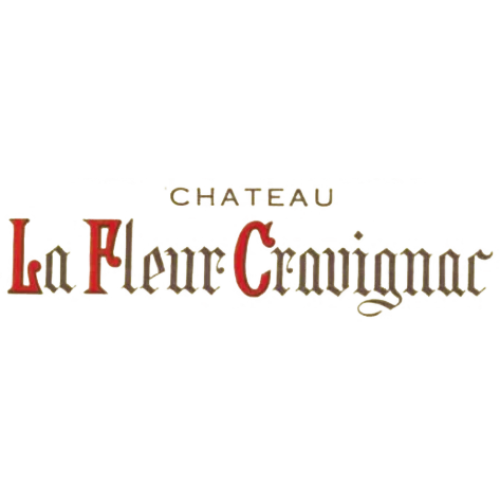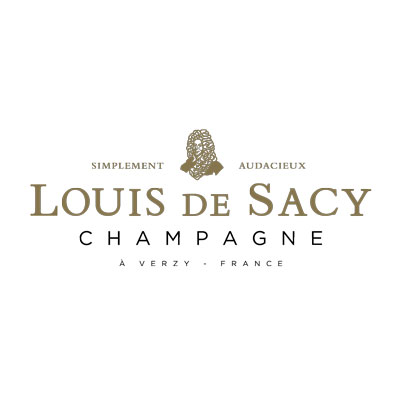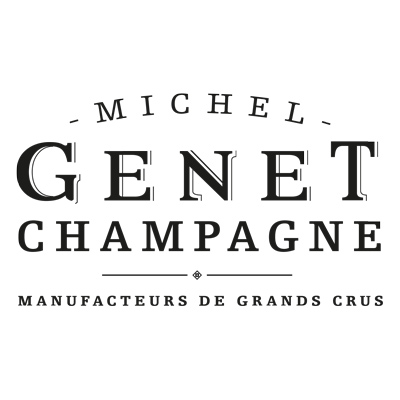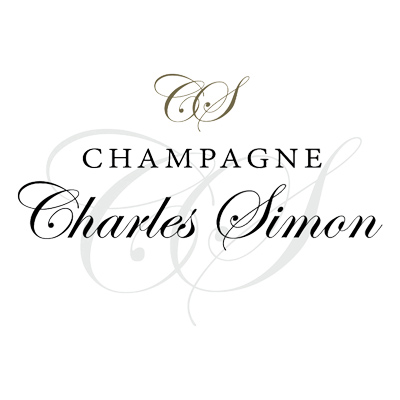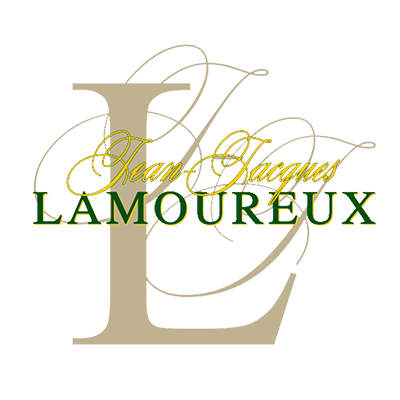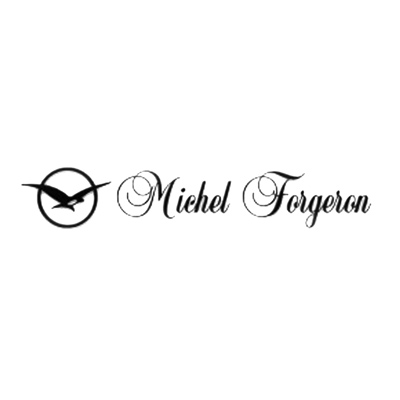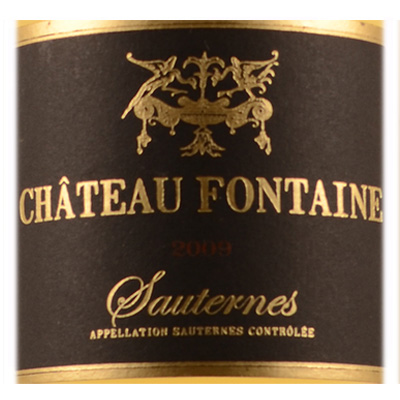France
Languedoc
Tiberius
Located in the heart of the medieval city of Sommières . The Mediterranean climate , with its different kinds of wind ( Mistral , the Tramontana and the sea ) promotes the culture of the vine throughout the year. The winery is operated in the towns of Sommières Salinelles , Aspères , Countryside, Garrigues , Lecques and Fontanes . Their winemakers working in the greatest respect for the land and environment to develop with passion for quality wines with a strong personality , revealing the terroir of Sommières .
Wines (3)Beau Chêne
Beau Chêne is a unique concept: for each grape variety, the producers select the ideal soil, in an area that stretches from Nîmes beyond Carcassonne. Since 1991, Beau Chêne is being produced by Catherine and Laurent Delauney. These 2 young wine producers, originating from Burgundy, are part of 4 generations of wine producers. After working in California, they both desired exploring the charmes of the Languedoc-Rousillon region, in the South of France. Cathérine is a real “maitre”, passionate about the art of wine tasting. She remains ultimately responsible for the quality of each of the Beau Chêne wines.
Wines (2)Monsieur et Mademoiselle
The range "Fifi and Marcel" was created by the inhabitants of the famous Château Fonbadet to offer some of the most classic grape varieties in France at an affordable price while keeping the quality in the foreground. The regions designated for this project are Côtes de Gascogne for white wines and Languedoc for red wines. An appropriate research of the soil and the climate of each place allows to create fruity and mineral white wines with a lot of freshness and for red wines of a beautiful concentration and at the same time seductive, sensual and tasty. The experience acquired over the years by this Château Bordelais now applies to these areas with high potential, where mass production was mainly done before. The importance is to restore these classic grape varieties in the quality they deserve. Moreover this French identity is emphasized by the frivolous character of the visuals on the bottles. Mr. and Miss, you will immediately feel the well-known feeling of "La belle vie à la française" putting you instantly in "holiday" mode.
Wines (7) About the wineryLe Bottle
The grapes used in the Le Bottle range come from the best vineyards around the historic town of Sommières. They are selected and processed with the utmost care. Every year we taste, select and optimize the wines on site by means of strict selection of the cuves and minor adjustments to the blends. This is how we succeed in guaranteeing maximum quality, monitoring and maintaining it. Les Vignerons du Sommièrois and we have been working together for years, which means we are able to optimally tailor the wines to your wishes. They are therefore wines that deserve a place in every wine cellar or on every dining table, at home or at a restaurant for a pleasant price. They excel in versatility and enjoy a more than tasty character that will appeal to both enthusiasts and connoisseurs. The presentation is beautiful and modern, where they exude solidity and class.
Wines (10) About the wineryLes Jamelles
The concept of Les Jamelles is unique for each grape variety is the ideal conditions found in an area that stretches from Nimes to Carcassonne, so its typicity is perfectly displayed as its original source. Since 1991 Les Jamelles is produced by Catherine and Laurent Delaunay. These are two young winemakers from Burgundy whose family has been producing wine for four generations. After their work in California, they both fell for the charms of the Languedoc-Roussillon region (southern France). Throughout the year, especially during harvest periods, Catherine travels throughout the region and they visit all the producers who work with Les Jamelles. They coordinate the vinification process, the maturation of the wines and the production of the various blends. Catherine is a real "maître", passionate about the art of wine tasting and on top of responsibility for the quality of each of the Les Jamelles wines.
Wines (38)Les Petites Jamelles
The concept of Les Jamelles is unique for each grape variety is the ideal conditions found in an area that stretches from Nimes to Carcassonne, so its typicity is perfectly displayed as its original source. Since 1991 Les Jamelles is produced by Catherine and Laurent Delaunay. These are two young winemakers from Burgundy whose family has been producing wine for four generations. After their work in California, they both fell for the charms of the Languedoc-Roussillon region (southern France).
Wines (3)Les Grands Arbres
From there on in, careful work in the vineyards - naturally healthy grapes, harvests performed with a great deal of care, vinification that respects the grapes and patient ageing - allow us to harness the power contained in these wines, thereby enabling them to reveal their delicateness and depth.
Wines (3)Les Sensibles
Les Sensibles is a range of a few individual grapes where by combining and selecting different vineyards, the best possible wine is obtained from each grape. By blending the diverse qualities of each lieu-dit, each grape can be presented in its most complete and optimal form. This results in a few wines in which the pure character of the grape is central. The wines are not influenced by wood aging or anything similar, but can be tasted in all their simplicity. The region around Sommières is one of the most privileged terroirs in Languedoc. Each bottle exudes the warm cordiality and joie de vivre of the sunny south. This range offers a complex enrichment for many festive tables and parties all of a kind.
Wines (9)Mademoiselle Colomba
"Colomba" tells us about a southern lifestyle, it tells us of the Garrigue. Vines are touched by the winds. Wines full of honesty, ingenious with a great delicacy, a touch of seduction, a hint of indulgence. This wine is a love story between a lady and her land.
Wines (1)Domaine Grand-Chemin
The Floutier family has managed the Domaine Grand Chemin for more than 300 years or 5 generations. Father, Jean-Marc and his 2 sons, Frédéric and Emmanuel, can let themselves go of renewal and experimental innovations in a region like the Cevennes. More than 50 different grapes are therefore allowed in the Pays d'Oc appellation, which means that there is no other wine region in France where you can display your own input and ingenuity. The legislation here is much looser than in the rest of France and allows flexible handling of grape varieties and grape combinations. In addition, the soil is also unusually versatile and home to many grapes. The Mediterranean climate and the immediate vicinity of the mountains (and the associated cooling) also offer the grapes ample opportunity to reach full ripening slowly and ideally. Grand Chemin guarantees an extensive, surprising and above all delicious range of wines with sometimes unexpected but delicious grape combinations. They also make wines under 3 different appellations: Pays d'Oc, Vins des Cevennes and Duché d'Uzés. This last small appellation is located to the east of the domain and includes 300 ha of vineyards around the town of Uzés, which is an extension of the Rhone valley. Cabernet Sauvignon with Pinot Noir…? Bring it on!
Wines (19) About the wineryCapitelles
A 'Capitelle' is a house ('cabin') made of stones stacked together without the addition of cement or other materials. They are located among the vineyards in Languedoc and provide the workers in the fields with a place to put away their tools or to take a nap between jobs. They are typical of the Cevennes region and help define the landscape. Originally Les Vignerons des Capitelles were actually 5 different Caves Coopératives in the Gard but in 2016 it was decided to gather into one company that controls the wine process from start to finish, putting quality as one of the main pillars. Most winemakers are young, ambitious and already working according to organic regulations. The others are in the middle of a conversion period towards organic viticulture. The wines are simple and tasty but produced with great skill and know-how. They offer inversely proportional drinking pleasure for relatively little money and allow you as a consumer to enjoy them without too much fuss or unnecessary frills.
Wines (4)Clé de la Source
Originally, Les Vignerons des Capitelles consisted of five different Caves Coopératives in the Gard region. However, in 2016, they decided to unite as a collective enterprise that oversees the entire winemaking process, with quality as one of the main pillars. Most of the winemakers are young and ambitious, already adhering to organic legislation, while others are in the process of transitioning to organic viticulture. The wines are honest and flavorful, crafted with great expertise and know-how. They offer generous tasting pleasure at a relatively affordable price, without unnecessary frills or superfluous embellishments. As a consumer, enjoy these delightful wines without any fuss.
Wines (3)La Légèreté De L'Être
This innovative project is a collaboration between Axel Wulfken and Allied Vintners. There has been a growing demand for low-alcohol or alcohol-free wines for some time now. However, the options available so far were not particularly impressive in terms of quality and rarely offered a pleasant taste experience. Thanks to new innovations and ideas, that is finally changing, we created a series of wines with only half the alcohol content (7,5°), showcasing a seductive and flavorful character. They gave it the fitting name "La Légèreté de l'Être," which refers to the alcohol content, of course, but also to the moments when these wines charm exceptionally. These are truly summery styles that shine best on a delightful terrace, at the beach, or in the company of a light (Mediterranean or otherwise) meal. However, do not be mistaken! "Light" does not refer to the taste!
Wines (3)Roussilion
Château Planères
The winery can look back on 4 generations of winegrowers and is a family collaboration between the Jaubert and Nourry families. It is located on a stony plateau that dominates the village of Saint-Jean-Lasseille. Due to the rough conditions, the vine has to work hard here to reach full maturity. The poor sandy soils with many boulders and limited limestone oblige it to dig very deep with its roots to ensure its food supply. This means that the very old grapevines can also provide themselves with water in times of drought and thus ensure a constant and balanced ripening of the grapes. Located between the Pyrenees and the Mediterranean, the climate here can also be very harsh. The constant play of winds and temperature fluctuations results in wines that display an incredible refinement, concentration, structure and balance. All Planères wines are therefore individual expressions of all these conditions together, with each vintage also requiring its own approach. Don't expect a bombastic or stewed jam style here, but delicate, mineral and terroir bound gems with a lot of personality that will undoubtedly make the heart of the true wine lover beat faster.
Wines (9) About the wineryMinervois
Domaine Ancely
In 1970, the parents of Bernard Ancely founded the domain. Located at the foot of the "Montagne Noire" Ancely enjoys the gifted terroir of dry, rocky soils with a high chalk content. The vineyards are perfect South, South West oriented. As a child, Bernard already found it a privilege to work in the vineyards. Not helping was a punishment ... just a little different than other children at that age. Bernard knows every vine on his vineyard and knows what they need. After he took over the winery of his parents he recovered an old and neglected parcel and restored it. He made it the jewel of the estate and called it "Les Oubliées", the forgotten vines, which produces a wine for which each wine lover will be respectful. But actually, this applies to all his wines: excellent result of hard work combined with know-how and a reflection of the wild nature that characterizes this beautiful region!
Wines (2) About the wineryProvence
Florie
Florie is a brand of Les Vignerons du Roy René. This winery, founded in 1922, was named after one of the most beloved kings of France. King René lived close to the common people and was known as a generous and good man who like to share his time with the average man, participated in parties and tournaments and thus when one of the few kings conquered a place in the heart of the Provencal people. The winery uses the strictest standards of the region and all vineyards must obtain a certificate from the Chamber of Agriculture that guarantees respectful and environmentally friendly viticulture (culture raisonnée). For example, they often apply stricter standards than many individual winegrowers, and several of their wines are voted the best in the region year after year. The vineyards are also subdivided according to location, soil and quality and thus guarantee that a maximum level per wine can also be achieved in the bottle and that each bottle can be traced up to the vineyard. They also link a more than fair price to their different wines which absolutely cannot be said of some so-called "big" names in Provence and some film stars settled there.
Wines (5) Page of the wineryMa Terre
The cave, founded in 1922, was named after one of the most beloved kings of France. King René lived close to the common people and was known as a generous and good man who like to share his time with the average man, participated in parties and tournaments and thus when one of the few kings conquered a place in the heart of the Provencal people. The cave uses the strictest standards of the region and all vineyards must obtain a certificate from the Chamber of Agriculture that guarantees respectful and environmentally friendly viticulture (culture raisonnée). For example, they often apply stricter standards than many individual winegrowers, and several of their wines are voted the best in the region year after year. The vineyards are also subdivided according to location, soil and quality and thus guarantee that a maximum level per wine can also be achieved in the bottle and that each bottle can be traced up to the vineyard. They also link a more than fair price to their different wines which absolutely cannot be said of some so-called "big" names in Provence and some film stars settled there!
Wines (2)Opale
The cave, founded in 1922, was named after one of the most beloved kings of France. King René lived close to the common people and was known as a generous and good man who like to share his time with the average man, participated in parties and tournaments and thus when one of the few kings conquered a place in the heart of the Provencal people. The cave uses the strictest standards of the region and all vineyards must obtain a certificate from the Chamber of Agriculture that guarantees respectful and environmentally friendly viticulture (culture raisonnée). For example, they often apply stricter standards than many individual winegrowers, and several of their wines are voted the best in the region year after year. The vineyards are also subdivided according to location, soil and quality and thus guarantee that a maximum level per wine can also be achieved in the bottle and that each bottle can be traced up to the vineyard. They also link a more than fair price to their different wines which absolutely cannot be said of some so-called "big" names in Provence and some film stars settled there!
Wines (2)AIX Pressions
The cave, founded in 1922, was named after one of the most beloved kings of France. King René lived close to the common people and was known as a generous and good man who like to share his time with the average man, participated in parties and tournaments and thus when one of the few kings conquered a place in the heart of the Provencal people. The cave uses the strictest standards of the region and all vineyards must obtain a certificate from the Chamber of Agriculture that guarantees respectful and environmentally friendly viticulture (culture raisonnée). For example, they often apply stricter standards than many individual winegrowers, and several of their wines are voted the best in the region year after year. The vineyards are also subdivided according to location, soil and quality and thus guarantee that a maximum level per wine can also be achieved in the bottle and that each bottle can be traced up to the vineyard. They also link a more than fair price to their different wines which absolutely cannot be said of some so-called "big" names in Provence and some film stars settled there!
Wines (4)AIX Ception
The cave, founded in 1922, was named after one of the most beloved kings of France. King René lived close to the common people and was known as a generous and good man who like to share his time with the average man, participated in parties and tournaments and thus when one of the few kings conquered a place in the heart of the Provencal people. The cave uses the strictest standards of the region and all vineyards must obtain a certificate from the Chamber of Agriculture that guarantees respectful and environmentally friendly viticulture (culture raisonnée). For example, they often apply stricter standards than many individual winegrowers, and several of their wines are voted the best in the region year after year. The vineyards are also subdivided according to location, soil and quality and thus guarantee that a maximum level per wine can also be achieved in the bottle and that each bottle can be traced up to the vineyard. They also link a more than fair price to their different wines which absolutely cannot be said of some so-called "big" names in Provence and some film stars settled there!
Wines (1)Rhône
Clos Romane
It is in the heart of the Provence Region, where Nadine and Stephane modestly decided to start making their own wine. Their first vintage was a fact in 2011. Only a few years later, their vineyard now covers an area of 30 hectares, overviewing the great plain of the Rhone Valley.
Wines (2) Page of the wineryChristophe Semaska
This area of the 16th century, located on the hillside facing the Rhone, in a privileged site to exploit the Côte Rôtie vineyards, and still remains the largest private estate of the Côte du Rotie. Over the years, the vineyard grew and today reaches 4ha. The technical and economic development of the company forced Christophe Semaska to the construction of a new wine cellar with the best equipment for better vinification, ripening, storage and a reception area of 500 m2
Wines (13)Domaine de la Côte de l'Ange
Domaine de la Cote de l’Ange dates back to 1972 when the domaine was founded by Jean Claude Mestre and Monique Jeune, both quite experienced as growers and winemakers in the southern Rhone. Domaine de la Cote de l’Ange produced their first vintage in 1974. The property has remained in the same families hands and is managed today by daughter Corinne Mestre and her sons Jules and Louis. They now own 13.5 hectares of vineyards in Chateauneuf du Pape and an additional 2.5 hectares of vines located in the Cotes du Rhone. 1.5 hectares are devoted to the growing of white wine grapes. The remaing 12 hectares are used in the production of red Chateauneuf du Pape wines.
Wines (7)Domaine Brunely
Domaine Brunely is located in Sarrians, a small village in the Vaucluse, between the Rhône and the Ventoux. This domain enjoys a lime-clay plateau, just on the appellation of Vacqueras, their most important production. In 1990 Charles Carichon took over the domain from his father. He immediately carried out a drastic renovation of the accommodations, equipment and materials to give the wines a modern and contemporary character. Over the years, other vineyards were bought on the appellations of Ventoux, Cairanne, Gigondas and Châteauneuf-du-Pape. Although they do not have an official bio-certificate, they work according to the same techniques and try to limit other interventions to a minimum. Expect delicious, clean and tasty styles that will convince you with a pleasant price.
Wines (5)Domaine Jas des Papes
The actual history of the vineyards goes back to 1890. The domain was then owned by the Granget family and known under the name “Château de Husson”. From 1973 to 2006, the wines were also bottled under this name. In 2007, the vineyards and the right to use the name “Château de Husson” were sold to a Luberon family, with Bernard and Jerôme Granget keeping 7.5 hectares of vineyards for themselves. New cellars and facilities were built and renamed “Le Jas des Papes”. The first harvest under this name was bottled in 2008. In 2014, Jerôme Granget then sold the domain to Michel Audibert, who employed Sébastien Philibert as manager and winemaker. It's Sebastien who is still responsible for the beautiful wines of this still young domain. In 2017, it was also certified 'organic' in order to comply with current climate and environmental standards. At the same time subtle and generous, the wines of Le Jas des Papes enjoy a very pure character and are an absolute enrichment for this world-renowned appellation. The Pope's stash is in safe hands here!
Wines (2)Loire
Domaine Olga Raffault
Located between the Loire and the Vienne, the vineyards of Olga Raffault are situated. Olga was running the family domain together with her husband when her husband died suddenly in the fantastic 1947 vintage. With the help of Ernest Zeinninger, a German soldier who was taken prisoner of war at the end of the war but who was released under the protection of the Raffault family, a top wine was finally realized that year. Having never understood the war, he later bonded with the domain and the Raffault family, resulting in a close friendship that would last. Later her son took over the domain and today it is granddaughter Sylvie Raffault who, with her husband and son, honors the legacy of Olga. The necessary modernizations and new techniques were implemented, but the style and character that Olga had in mind were retained. The wine and vineyards are fully organically labeled and are made and maintained with the greatest care and respect for the environment and climate.
Wines (2) About the wineryPinon Damien
Damien and Ingrid Pinon are both one team as well as winemakers as in daily life. Among them, the domain was completely modernized and given a contemporary style. The vineyards are 100% Chenin Blanc planted for both foam and still wines and have been organically farmed for over 10 years. This includes avoiding chemical fertilizers and sprays, plowing natural vegetation between the rows to promote the balance of the local flora and fauna, etc. However, this organic method has never been endorsed with a certified label. Since 2020, work has also been done on this and an official certificate is pending. One of the great assets of Vouvray is the rather unique subsoil of a specific type of limestone and millennia-old remains of crustaceans called Tuffeau. This geological layer dates back to Turoon, so named because this geological timeline is most visible near the city of Tours. It guarantees one of the best expressions of Chenin anywhere in the world. The beautiful cellar of the domain, where the wines ferment and mature, was completely hewn from this lime layer.
Wines (2) About the wineryAntoine de la Farge
Antoine's grandfather, Gerard Clément, was one of the most respected winemakers in the region and one of the founders of the 'Menetou-Salon' appellation. He is still present on the domain and for Antoine he was and still is his great inspiration and example. He started his career in a wine shop and later became a wine buyer for one of France's largest wine merchants. Here he was given the opportunity to expand his knowledge enormously and gain international experience (ex. in Australia). After 12 years of experience, he returned to the domain in 2012 to put all that experience into practice. As a winemaker, Antoine feels like a conductor who transforms the soil into music. Every wine must be a natural reflection of its soil and requires sustainable agriculture to achieve this. The winegrower is the cement between the grape variety and the final wine. He does not want to manipulate the wine, but only to accompany it gently. That is why all grapes are picked by hand, only gravity is used and no yeasts are added to get the fermentation going. His wines therefore constantly win prizes!
Wines (10) Page of the wineryDomaine du Clos Roussely
Domaine du Clos Roussely welcomes you to Angé in the Loir-et-Cher. After returning from New World at age 25, Vincent created the domaine which was his childhood dream. On one side, 8 hectares of vineyard had been cultivated by his grandfather 20 years earlier, and another 15 hectares surrounding an old farmhouse. He works his vineyard by respecting the the natural biodiversity and harvests by hand. The wines are both festive and surprising.
Wines (4) About the wineryDomaine Gadais Père et Fils
For 5 generations, the Gadais family has been guaranteeing the production of top Muscadet sur Lie in the Loire village of Saint-Fiacre-Sur-maine. Since the early 1700s, the “Melon de Bourgogne” (Muscadet) has been renowned for its almost unbeatable combination with fish dishes and more specifically shellfish and seafood. The grape is indeed originally from Burgundy, but nowadays it is only produced in the region around Nantes. The region of the Muscadet has traditionally been dominated by large trading houses that put quantity over quality, making it difficult for the smaller winegrower to compete and leading to a price war that only knew losers. But for some time now, under the impulse of a few passionate winegrowers, the qualities have increased enormously and you can even find gems of wines there for modest prices. The Gadais family owns several domains and is one of the pioneers in the field of modernization, ecological and sustainable agriculture and quality improvement in general. The vineyard where there is historically the very first known mention of Muscadet is also in their possession. They gave the Melon de Bourgogne back the place where it rightly belongs. Namely among the best culinary wines of France.
Wines (1)Domaine Paul Thomas
The vineyards of Paul Thomas are located in the tranquil village of Chavignol at the foot of the Côte des Monts Damnés. The privileged soils contain a lot of lime and are similar to the infamous "Oyster Bank" grounds in Chablis. (Terre Blanche) Chavignol is also known as one of the few real origin names of cheese. Namely the famous Crottin de Chavignol. (Local goat cheese) This can, if not different, combine like any other with the local Sancerre wines. Nowadays, son Raphaël Thomas runs the small family business. Normally he aspired to a career in physics but after his father suddenly died in 2000 he decided to continue the family tradition. He attaches great importance to a natural vinification and fermentation in old traditional wooden barrels and wants to make an optimal expression of Sancerre of each cuvée. Each cooper of grapes is harvested manually and carried from the steep slopes. Because of the different characteristics of his land, he can produce some beautiful Sancerre's with various characters. His wines show an ideal balance between intensity and structure and ensure that every wine lover has the necessary drinking pleasure.
Wines (5)Donatien Bahuaud
Born in 1906, Donatien Bahuaud has been passionate about viticulture since early childhood. As a young man, he was then 23 years old, he founded the house “Donatien Bahuaud” and was one of the founders of the AOC “Muscadet sur Lie”. In 1957 he buys Château Cassemichère from where he specializes in the different terroirs and soils of the Loire. Everywhere he is looking for the ideal pieces of land to grow wine. He goes from Nantes, via Chinon and Saint-Nicolas-de-Bourgueil, to Pouilly Fumé, exploring almost the entire terroir of the Loire. Another thing that set him apart from most vintners was his specialization in "educating" the wine, which, according to him, makes the difference between just good and real top wine. Today, at Donatien Bahuaud, they continue to pursue the ideas and knowledge of this exceptional winemaker, benefiting from his pioneering work as the discoverer of the very best vineyards in the various appellations. His wines are therefore real gems and represent an entire wine region such as the Loire.
Wines (1)Monmousseau
What's in a name? In 1886 Alcide Monmousseau founded a winery that specialized entirely in creating and raising Sparkling wines in the classic way as in Champagne where the wine gets its pearls on the bottle. In the shadow of the famous castle of Chenonceau, huge cellars were dug out of one of the largest Tuffo layers in France. This white rock was not only used to build castles and abbeys, but is also ideal as a thermoregulatory material for the storage and aging of sparkling wines. The wines therefore receive a long maturation sur lattes, making them among the finest and most balanced in the region. They also pride themselves on exceptional mastery of blending. Their Crémant de Loire therefore consists of 6 different grapes, all of which contribute to the ideal assembly.
Wines (1)Château de Brézé
Château de Brézé is a unique historical monument built between the 11th and 19th centuries. It is actually a castle under which a complete fortress was dug out of the rocks. This was for protection against invasions such as those by the Vikings. It has one of the deepest dry moats in Europe. Under the castle, there are 3 km of tunnels and rooms. These were among the first known protection bunkers in history. They house historical bakeries, stables, dormitories, kitchens, a barrel room, and even a silkworm farm. For that alone, it is definitely worth a visit. The above-ground castle is built in a beautiful neo-Gothic architectural style. The current owners, the Count and Countess of Colbert, are still restoring it. With Vignobles Colbert, they produce a range of equally magnificent wines under the Saumur Champigny appellation. Thus, Château de Brézé is one of the major attractions of the region. The vineyards stretch around the estate and are among the best in Saumur.
Wines (5)Alsace
GRAND C
This young, ambitious wine project was set up under the expert guidance of Axel Wulfken, former Marketing Director and Product Manager of the Moët-Hennessy and Jacques Cattin, one of the most leading winemakers from Alsace and president of the renowned "Association Crémant d'Alsace". Over the years, his cremants and wines received various awards. The purpose of Grand C is to market a range of delicious, pure and modern Alsace wines, which meet a contemporary and representative style, and which liberate Alsace from its boring, old-fashioned image without loosing the tradition and typicity of the region. The presentation is also far from the classic, ugly Alsatian bottle and exudes an innovative, colorful atmosphere. Especially with its wines itself Grand C will give you more than pleasant surprise and instant wine fun on many occasions!
Wines (9)Beaujolais
Domaine de Colonat
The current winemakers are Christine and Bernard, who have been cultivating the Domaine de Colonat since 1977. After specialised studies in the field and time spent working abroad, their son Thomas has joined the family estate. The know-how as artisan winemakers has been passed on from generation to generation. Respectful of their land, they seek to practice sound and clean winegrowing without fuss, but rather based on a philosophy of sincerity in order to protect the outstanding terroirs and pass them on to future generations. They strive to produce deep-rooted and living wines full of character and emotion.
Wines (10)Bourgogne
Domaine des Poncetys
The foot of the Roche de Vergisson, situated in Southern Burgundy, at the crossroads of 3 great regions (Burgundy, Bresse and Beaujolais), each with a rich historical past and a world-renowned cultural heritage, the Domaine des Poncétys is today the teaching institution for the Lycée Viticole de Davayé. Since 2004, the domaine has been engaged in a process of understanding of its terroirs of Saint Veran.
Wines (4)Seguin Manuel
Their demand for high quality can be seen from the vineyards all the way to the bottling. To put it in the words of winemaker Thibaut Marion himself: « Beyond my deep respect for the vineyards and wines of Burgundy, I never forget that this divine beverage is a mean to share moments of friendship.
Wines (21)Domaine du Bicheron
Here in southern Burgundy, the grapes enjoy more sun and Mediterranean influences, making the wines appear riper and rounder. The domain was founded in 1889, so that the 5th generation has now taken over the torch. Domaine du Bicheron can therefore build on a long tradition and experience in which the newer generations also introduced the latest techniques and installations. Like any right-minded modern company, great respect for the environment and climate is central here too. They have been working according to the Lutte Raisonnée for a long time, but since 2018 they now also have a real Bio label, HVE (Haute Valeur Environnementale). Moreover, a region like Burgundy naturally has its price (and today it has evolved out of all proportion). In that sense, you will find beautiful and honest wines here that form an affordable and tasty alternative to the top wines of the Côte d'Or, which are only available to a select audience these days.
Wines (3)Chablis Thomas Labille
In 1987, Etienne Boileau, Christian Simon and William Nahan pooled their available vineyards, giving them 11 hectares to ensure the start-up. 80 ha is still used to grow grain. A year later, the vineyard is already doubled. After a few difficult early years, the cultivation of grain is completely stopped and only one focus remains: WINE! In 1993, heavy investments were made in the cellars to guarantee an autonomous and qualitative vinification. This immediately leads to a first gold medal at the Concours Agricole de Paris. Over the years, several modernizations as well as prizes and medals followed. Gradually, the original domain manifested itself at the beginning of this century as one of the fixed values and better domains of Chablis. In 2019, the 3 original partners will retire and the succession will be ensured by Arnaud Nahan and Thomas Labille. With their latest vintages they prove that the quality has only improved. The original name is changed to simply 'Thomas Labille' but it remains Chablis and Chardonnay with a capital C... Bring on those oysters!
Wines (4)Domaine Passy le Clou
Domaine Patrice was founded in 1950 by the father of Gérard and Christian Patrice. The land with grain was switched to grape-growing and the accommodations to wine-growing in general. It was mainly Gérard who took care of the growing wine section. The available land in Petit Chablis, Chablis and Chablis 1er Cru Beauroy was initially worked for the Cave Coopérative, but in the early 2000s all installations were purchased to enable the transition to the production of high-quality Chablis wines. In the first years, the wines were still sold to Negociants, but since 2017 Domaine Passy Le Clou became a fact and the wines are marketed under their own name and management. From its first year on, the domain has garnered rave reviews from many wine fanatics, won the necessary prizes and immediately settled among the better producers of the appellation. They stand for sustainable viticulture with great respect for nature and in 2019 obtained the certificate: “Haute Valeur Environnementale”. The future therefore smiles broadly and radiantly at Passy Le Clou.
Wines (3) Page of the wineryDomaine Naturabilis
Thomas Collogne is the 7th generation of a winemaking family and the owner of Domaine Colonat in Morgon (Beaujolais). Colonat already has a rich history as a top estate and is one of the established values of the region. In 2017, Thomas decided to establish his own domain alongside the family estate where he could fully express himself and his own ideas. His goal is to produce high-end wines in limited quantities that are fully in harmony with nature and with as little external influence as possible. The vineyards are completely organically cultivated and are labeled as natural wine. Sulfites are barely used, fermentation occurs in stainless steel, and aging takes place in amphorae. The result is a deliciously fruity wine with a playful structure and an enviable pure character. Naturabilis is Latin for "In harmony with nature," which nicely summarizes the entire philosophy.
Wines (3)Bordeaux
Domaine du Claouset
The Siozard family lived and worked not far from Claouset, on the banks of the Dordogne, opposite the prestigious St-Emilion. Since the end of the 19th century there followed several acquisitions that drove more than 40 hectares of vineyards are now being processed. The long history today is that the soil characteristics of the country are better understood. For example, a range of Bordeaux wines can be offered in a modern way to meet while maintaining the family, traditional spirit your expectations.
Wines (1)Château Brondelle
In a part of the world with more vineyards and wineries per square inch than any other wine producing region on earth it might seem difficult to stand out from the crowd – but Jean-Noel Belloc of Chateau Brondelle has accomplished just that. Brondelle stands apart from the crowd for it's humility and authenticity that is reflected in both in his demeanour and in his wines. Here in the often overlooked terroir of the Graves, Jean-Noel producing an exciting line-up of whites and reds that are clean, fresh, delicious and well-made .
Wines (15)Château Rocher-Gardat
Family business consisting out of three properties on the right bank of the Garonne (Gironde). In 1880 Chateau Rocher Gardat came to complete the family vineyards. The grandfather of Michael gave the name to this property because of the plots of vines that are located on the place called “Gardat” and also because in this land there is a big rock (rock = rocher in French).
Wines (3)Château Fleur La Mothe
“The Dream becomes a Passion.” Château Fleur La Mothe was founded in 2008, with one soul objective: to express the quintessence of the Medoc -terroir. Opening a bottle of Château Fleur La Mothe must be a moment of pleasure to be shared.
Wines (3)Château La Croix Romane
Part of Vignobles Dubard estate, which was founded in 1977 by two brothers and their sister, now brings together four dynamic family-owned wineries located on the right bank of the river Dordogne in the South West of France: Château Laulerie, Château Les Farcies du Pech’, La Croix Romane and Château Nardou. La Croix Romane was added to the Dubard family’s wine estates in 2008. The name derives from the adjacent 12th century church erected by the Hospitallers of Saint John of Jerusalem (Knights of Malta), whose cross the label bears.
Wines (3)Château Vieux Chantecaille
Family business consisting of three properties on the right bank of the Garonne (Gironde). Chateau Vieux Chantecaille entered, thanks to an inheritance in the family in the mid 19th century. It owes its name to “Chantecaille” that is to say, the place where it is located.
Wines (3)Château Brillette
Historically, the vineyards of Château Brillette are among the very best in Moulis. Already when the Flageul family bought the domain in 1975, that was a fact, but since then all vineyards and the entire cellars have been taken over and renewed. They also benefit from a variety of terroirs that enable them to produce versatile and complex wines. A constant in this variation is the presence of many white boulders (Graves) on the surface, which gives an shining effect (Brillant in French) in the summer sun ... Brillette was born! To leave nothing to hasard, the knowledge of master winemaker, Eric Boissenot, is used. His merit in the Médoc is unrivaled and just about all big names such as Latour, Lafite-Rothschild, Margaux, Mouton-Rothschild, Palmer, Léoville Las Cazes and many others have been able to benefit from his expertise.
Wines (1)Château Lamothe Vincent
Since 1920, Château Lamothe-Vincent has consistently produced distinctive, award-winning wines. They embody the essence of our philosophy: The quest of Expression. Each cuvée has its own personality, but they have in common to be uncommonly good value. Each vineyard produces its own cuvée after harvesting and constant experimentation in winemaking techniques ensure that these different wines are aged by the process which best enables the true aromas and flavours to express themselves. Endless tastings then take place to find the perfect blend that will represent the name of Château LAMOTHE-VINCENT.
Wines (5)Château Bel Air
Châeau Bel Air, added the Puisseguin St Emilion wine appellation to the Dubard famil's portfilio in 2011. The wine label shows the Sacred Haert's medallion, also present on the village's church and a reminder of the former parish of Puisseguin's devition to the Sacred "Surgam et Ibo" or "I will stand up and go".
Wines (1)Fonbadet
In the north of the Village of Saint-Lambert, the Château Fonbadet vineyard can be found, amidst the most reputed estates of the Pauillac Appellation. Fonbadet, the place that gave its name to the estate, is a typical place name in the Médoc terroir, a combination of the Gascogne words meaning fountain (fon) of the little valley (badet). In the Middle Ages, the estate was part of the Château Latour domain and all the evidence dating back to that period shows that vines were planted very early on.Since 2014, Michel Rolland's aid has also been called in. They also have a few other domains in Pauillac including Château Pauillac, a small domain located at a vineyard, were Château Latour also has its vineyards. The wine is 100% on new oak and consists of 70% cabernet sauvignon and 30% merlot. The 2nd wine is called "L'Harmonie de Fonbadet" and consists of the same mixture as mentioned below. Here too the wine matures 18 months of which 15% on new oak.
Wines (7)Château Prieuré-Lichine (Bordeaux Collection)
Already in the 15th century there was structured viticulture by the monks of Cantenac. The domain served as a stopping place for pilgrims en route to Compostela. Prieuré-Lichine, for example, is a big exception in the classification of 1855, because almost all domains belonged to the nobility or the rich Bourgeoisie and there were no other wine properties in Bordeaux that belonged to the church. In 1952, Alexis bought Lichine, and named it Prieuré-Lichine. Alexis was one of the most colorful figures and best tasters ever in the history of Bordeaux. Just typing him would probably cost us a small book. Today the current owner, the Ballande group, owner of the most renowned domains in the world, boasts that you can find all the best features that Margaux has in one bottle of them.
Wines (1)Château Taillefer (Bordeaux Collection)
If you enter Pomerol along the west, it is the first serious domain that you encounter. It is one of the oldest properties in Pomerol and the building itself dates from the early 1800s. In 1923 it became the first domain of the famous Moeix dynasty that still holds it today. Unlike other Chateaus, Taillefer was closest to the commercial center of Libourne, making it easy to transport the wines by train to different locations and the markets that sold their wine at that time. The substrate also contains a relatively large amount of iron and also explains the name "Taillefer" which refers to this raw material.
Wines (1)Château La Dominique (Bordeaux Collection)
Dominique has a long history in the region that goes back to the beginning of the 18th century. The name comes from the first owner who made his fortune on the Caribbean island of the same name. In 1969 the domain was bought by the current owners, the Fayat family. Clément Fayat was a rather remarkable figure who started his career as a bricklayer and from there grew into one of the largest construction companies in the world. It took a while before he implemented modernisations, but gradually a new drainage system was installed first and later a completely new basement was added. But it is mainly since 2007, when the new wine consultant, Jean-Luc Thunevin, joined the team that qualitative steps were taken and Dominique settled at the top of Saint-Emilion.
Wines (1)Château Grand Mayne (Bordeaux Collection)
The name Grand Mayne can be taken literally in this case and is freely translated for a luxurious house with a large piece of land attached to it. The house itself was built at the end of the 15th century and then also had 250 hectares of vineyards, which, compared to the 21 hectares of today, was a lot bigger. In 1934 the domain was purchased by the Nony family who modernized for generations but the biggest change, and a huge leap forward in quality came only from the vintage of 2015. Brand new accommodations and especially the influence of the new wine consultant Louis Mitjavil make Grand Mayne today one of the references of Saint-Emilion. The last volumes are therefore officially the best wines ever produced on Grand Mayne.
Wines (1)Château Sociando-Mallet
Sociando-Mallet was already founded in 1633 but it was in 1969 that it was purchased in its current situation by Jean Gautreau. He carried out drastic modernisations, expanded the vineyards and prepared the estate for the 21st century. Unfortunately, he died in 2019 at the age of 92 and the domain is now run by his daughter and her son. The vineyards are located north of the appellation of Saint-Estèphe. Due to its fairly northerly location in the Médoc, it is usually at its best in warmer vintages and is therefore characterized by a fairly elegant style. It is also one of the few Chateaus where nature is allowed to go its own way and so no green harvesting or yield reduction is done. This also gives it its rustic and slightly green character, which means that the wines usually need a little more time than with other Médoc's and have a rather 'own' audience.
Wines (2)Vignobles Bardet
The story of the Bardet family starts in the 18th century when one of their ancestors with his boat took care of the transport of wines to the port. The vineyards located next to the Garonne (from Bergerac to Bordeaux) were thus able to transport and export their products. After some time some vineyards were bought and with the entry of the railways, transport over the river was soon superfluous. It allowed the family to concentrate more and more on wine-making. The original boat, however, was included in the family coat of arms and remains on all bottles until now. The current owner, Philippe Bardet, with the help of his sons, runs the various Châteaux with great dedication and great concern for the environment and ecosystems. Both on the field and in the basement no effort is spared to keep the ecological footprint as small as possible. It is not sprayed preventively or threated with chemical fertilizers, chance of superfluous oxidation is kept as small as possible, geothermal energy is used and some wines are bottled even without added sulphite. Châteaux Franc le Maine and Château Paradis were last bought. The latter domain used to belong to the family and is a 5-hectare paradise for vines along the banks of the Garonne. It has become the "home" of the family. The wine produced here is one of the absolute top wines of Bordeaux!
Wines (3)Château de La Commanderie
In 2019, Karine and Jean de Colbert acquired Château de la Commanderie, including the surrounding 29 hectares of vineyards. This acquisition marked a new era for the estate, with the new owners making significant investments in both the vineyards and the winery to improve quality and sustainability. The Colberts have focused on enhancing the vineyards and winery by integrating modern technologies and implementing sustainable farming practices. The new owners have invested in state-of-the-art vinification equipment and methods, including the use of concrete and stainless steel tanks for fermentation and French oak barrels for aging. The estate encompasses a total of 40 hectares. 4.5 hectares of the finest vineyards are bottled separately and sold under the name 'Cuvée Rubis'. Commanderie stands for quality, reliability, and trustworthiness and is likely one of the best introductions to Bordeaux in the Libourne region. Château de la Commanderie was built in the 12th century by the Knights of St. John of Jerusalem, who provided shelter to pilgrims on their way to Santiago de Compostela. They protected them from bandits and other dangers.
Wines (6)Château La Fleur Cravignac
This old 18th-century castle owes its name to its illustrious owner Jean-Baptiste Lavau de Cravignac, who was a parliamentary lawyer. It was passed down from generation to generation and in the early 20th century, the name changed to La Fleur Cravignac, becoming the official name in the national assembly. In 2021, the estate was finally acquired by Karine and Jean de Colbert, who are not new to the field with Château de Brézé and Château de la Commanderie. Immediately, the cellars were modernized and a strict quality control was implemented. All vineyards are cultivated with the utmost respect for nature and are officially certified organic. The concrete vats for fermentation are fully temperature-regulated, and the wine is partly aged in new oak barrels and partly in amphorae, where tradition and modern innovation go hand in hand. The wine is wonderfully pure in character and showcases a remarkable balance.
Wines (2)Sud-Ouest
Domaine de Laguille
This well-established family-owned vineyard is situated in the south west of France, an area known for its good living. Working with attention for the environment whilst implementing improved working conditions, Laguille domain has invested in a high and modern performing production process. Looking to the future, photovoltaic panels have been mounted onto our wooden buildings so now today, the estate produces more energy than it consumes.
Wines (2)Monsieur et Mademoiselle
The range "Fifi and Marcel" was created by the inhabitants of the famous Château Fonbadet to offer some of the most classic grape varieties in France at an affordable price while keeping the quality in the foreground. The regions designated for this project are Côtes de Gascogne for white wines and Languedoc for red wines. An appropriate research of the soil and the climate of each place allows to create fruity and mineral white wines with a lot of freshness and for red wines of a beautiful concentration and at the same time seductive, sensual and tasty. The experience acquired over the years by this Château Bordelais now applies to these areas with high potential, where mass production was mainly done before. The importance is to restore these classic grape varieties in the quality they deserve. Moreover this French identity is emphasized by the frivolous character of the visuals on the bottles. Mr. and Miss, you will immediately feel the well-known feeling of "La belle vie à la française" putting you instantly in "holiday" mode.
Wines (7) About the wineryChampagne
Champagne Louis de Sacy
Louis de Sacy is located in a very famous terroir in Montagne de Reims, Verzy. It is here that for 13 generations we cultivate the vine with passion always having in mind the idea of transmission of our know-how. The family owns the vineyard in Champagne since 1633. It was André Sacy who, in 1962, decided to produce Champagne, by founding Champagne Sacy Père et Fils which later became Champagne Louis de Sacy in 1986, named after our brilliant ancestor. Yaël and Jonathan Sacy, after various commercial experiences in France and abroad, joined the family business in 2013 in order to ensure continuity and to develop the notoriety. Today, Louis de Sacy exploit 18 hectares of vines with the deep respect of this land that has seen us born. Some numbers: 18 hectares of vines, 4 sectors, 23 identifiable plots Vines aged 28 years on average Grape varieties: 65% in Pinot Noir, 30% in Chardonnay and 5% in Pinot Meunier Soils: clay - limestone / limestone - marly Mountain of Reims: Verzy (Grand Cru) Trépail (1er Cru) Aube: Bligny Mont de Berru: Cernay Ardre Valley: Treslon
Wines (1) About the wineryChampagne Michel Genet
Chouilly is located just below Épernay and is one of only 17 Grand Cru villages in the Champagne region, exclusively for Champagnes made from pure Chardonnay (Blanc de Blancs). With over 500 hectares of classified vineyards, it is the largest village within the appellation. The estate was founded in the 1960s by Michel Genet. Today, it is Antoine and Agnès who cultivate the vineyards and have brought the estate into the 21st century. They describe themselves as “Manufacteurs de Grands Crus,” encapsulating their entire philosophy in this single term: “Manu-facture = Handmade.” All their vineyards are located in Chouilly and Cramant, farmed responsibly and organically (lutte raisonnée), harvested manually, vinified separately, and handpicked by their own team. This ensures some of the highest-quality Champagnes, surpassing many major brands. In 2019, their excellence was recognized at the Concours de Bruxelles, where they won a gold medal for the best Champagne of the event
Wines (13) About the wineryChampagne Charles Simon
Charles Simon is a relative newcomer on the champagne scene, but the two proprietors, Davy Dosnon and Simon-Charles Lepage, both have roots in wine country. Dosnon studied viticulture and winemaking, and has been working at several different champagne houses. He eventually inherited some vineyards from his grandfather, and in 2005 he was joined by his friend, Simon-Charles Lepage. The two decided to put their minds together to create a new champagne house, intended to express the terroirs of their native region.
Wines (4) About the wineryChampagne Lamoureux
Just after the 2nd World War, in 1947, grandfather René Lamoureux planted his first vines in Les Riceys, making him the de facto founder of the house. However, it was his son, Jean-Jacques, who further developed this small winery to the next level. Les Riceys belongs to the least known and most secluded part of Champagne, the Côte de Bar. It is situated between Reims (Epernay) and Bourgogne, below the city of Troyes, far from the touristic heart of Champagne where the famous large houses are located. All the more, however, surprising and interesting discoveries can be made here without support of big branding. They count solely on their pure class. Today, son Vivien manages the winery, where Pinot Noir, Chardonnay and Pinot Meunier are presented pure and blended, with the same high quality standards for each cuvée. Just about all different types of champagne are represented here and make Champagne Lamoureux an unmissable opportunity for every champagne lover.
Wines (10) About the wineryCognac
Cognac Michel Forgeron
100 % of our vineyards are situated in the best part of Cognac: GRANDE CHAMPAGNE
Wines (6)Charentes
Michel Forgeron
100 % of our vineyards are situated in the best part of Cognac: GRANDE CHAMPAGNE
Wines (1)Sauternes
Château Fontaine
The wine is a very viscous honey, deep amber colour. The aroma is intense with hints of elegant honey and bruised apple.
Wines (3)